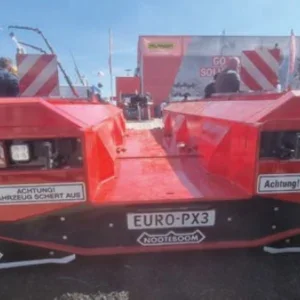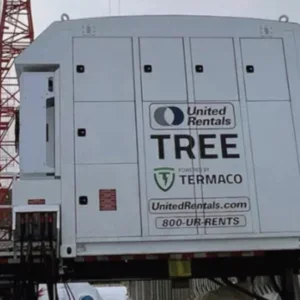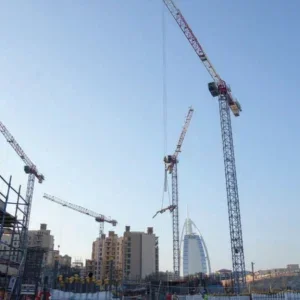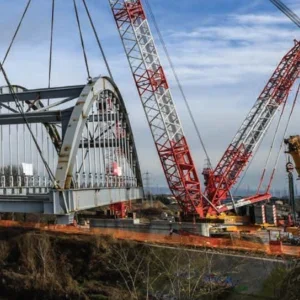Like their European counterparts, the cranes on boom trucks originally helped place a payload on a job site. A portion of boom trucks will probably always serve this market. At their most price-conscious, boom trucks are operated by one or a few stand-up operator stations. These cranes mount directly behind the truck cab, so the boom faces rearward. This gives the rest of the truck bed space, and, crucially, carrying capacity for payload on top of the rear axle pair.

A National 18000-series boom truck on site
Over the past few years, a new generation of long-boom trucks that seem to have more in common with truck cranes has emerged. Of course they still mount on a commercial chassis, so they are street-legal without a permit.
But their upper-structure swing seats (some have enclosed the seats in cabs) enable an operator to work in comfort and move with the crane, so they need not strain their necks to see the boom tip.
“Even when needing to swing the boom small amounts, the operator can feel the movement, watching the load, rather than the boom tip or turntable,” says Dave Hill, Altec marketing manager. “To many, this type crane makes them more productive.”
Crane and cabin sit on top of the rear axle pair, so there is less space, and less carrying capacity, for payload. Because the crane base is mounted so far back on the chassis, their booms tend to stow to the front, over the cab, like a truck crane.
“The market for small truck/taxi cranes has evolved,” says Randy Robertson, Manitex marketing director. “Getting in the crane business as an owner operator was once out of reach for a one person operation. In today’s world we have a large number of customers who are husband-and-wife teams. The wife is the dispatcher and administrator, while the husband is the crane operator. The owner-operator feels more at home in the seat rather than standing.”

National 18000-series gives Las Vegas a lift
“Financial institutions make it easy to finance a truck and crane package for individuals; where in the past financing a specialized carrier was more difficult. Commercial chassis used with boom trucks are commonly financed, in fact the chassis manufactures will bundle the crane with the truck on one monthly payment in many cases,” Robertson says.
At small distances and low lifting heights, these boom trucks cannot keep up with truck cranes, which generally have stronger booms. “They really don’t compete in the small truck crane market other than boom length,” says Scott Smith, Terex Cranes North America sales manager.
That may be enough. Their reach makes swing-cab boom trucks perfect for raising roof trusses or HVAC units, placing payloads (carried by other vehicles) on site, and carrying out specialty jobs such as tree-trimming, or wire-line work in oilfields. In other words, they are an inexpensive taxi crane.
Partly because they are mounted on a standard commercial truck chassis, and partly because they are lightweight and simple, boom trucks are likely to be cheaper to buy and run than truck cranes (and certainly than all-terrain truck cranes). “Any time that a hydraulic lift can be mounted on a commercially produced chassis, the overall acquisition cost will be lower to the end user,” says Hill from Altec.

Swing-cab National boom truck
“Riding seat boom truck cranes have crept up in size, approaching 40 tons, taking business away from comparably sized truck cranes – largely due to initial purchase price. Several reputable manufacturers have provided good solid boom truck cranes for these applications, making a return to the traditional truck cranes not likely,” he says.
The cranes are often expected to have the same 10-year lifetime as a truck crane. Should the crane last longer than the truck’s engine- which is conceivable for a crane that does only a few specialist jobs over a wide geographical patch – it can be removed from the truck and used again.
“We would like to think boom trucks are becoming more widely used in traditional truck crane applications,” Robertson says. “Our truck-mounted cranes are higher in capacity and more mobile than a number of the traditional truck cranes. So much so that Manitex will be reinventing itself as a manufacturer of truck-mounted cranes rather than boom trucks.”






